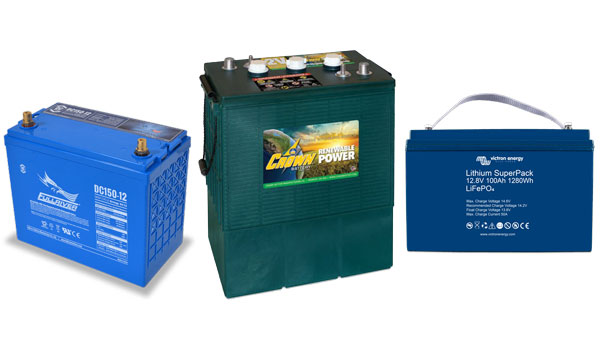 If you’ve stuck with us this far concerning solar-powered setups, congratulations! If not, perhaps consider going back to review the other articles on solar systems that have brought us here. This week, we’re continuing the series with a discussion of batteries, the primary source of power storage for your system. While they’re heavy, expensive, and can be a real pain, batteries are far and away one of the most important components of your system, and should be invested into accordingly.
If you’ve stuck with us this far concerning solar-powered setups, congratulations! If not, perhaps consider going back to review the other articles on solar systems that have brought us here. This week, we’re continuing the series with a discussion of batteries, the primary source of power storage for your system. While they’re heavy, expensive, and can be a real pain, batteries are far and away one of the most important components of your system, and should be invested into accordingly.
While batteries’ importance is rather self evident, being the primary storage for any off-grid system, they can also serve as backups to an on-grid power source. The sorts of deep cycle batteries you’ll need come in essentially two types: lead acid and lithium. As a general rule of thumb, lead acid will be less expensive, but also less efficient, while lithium will be more expensive, and more efficient. The subcategories of each are as follows.
Flooded Lead Acid
One of the most common types of batteries you’re likely to find on the market, flooded lead acid batteries feature a tried and true technology, and the lowest upfront cost. They do require maintenance, however. You’ll need to check the water level in the cells, and top them up with distilled water as necessary. This usually means about once a month. They also only feature a middling battery life–five years on average, seven if you get quite lucky.
Sealed Lead Acid
Next up come sealed lead acid batteries. These operate on the same basic principles as their flooded cousins, but do so at a slightly higher cost. Common models you encounter will be gel filled, or of the absorbent glass mat variety. As a general rule of thumb, gel deals with wild temperature swings better and is longer lasting, while AGMs have a more efficient charging rate and can handle more vibration (not that this will be a concern with your battery unit, as it should be stationary). While this extra cost does buy you a maintenance-free and more efficient design, it comes at the price of a shorter lifespan–generally just three to five years–meaning if you’re on a budget, you’re probably better off to go with the flooded version, and do some upkeep yourself.
Lithium
These batteries are far and away the most expensive. In fact, they’re so expensive I didn’t even bother mentioning them in the solar overview article, as very few people run them. If you’re planning on a long-term, fully off-grid, self-sufficient system however, lithium is really the way to go. First off, their lifespan is astounding at over 10 years. Quite a few even last longer than that. They’re maintenance-free, waste far less power when charging and discharging (charging rate), and can be cycled deeper, meaning they use far more of their capacity. As these batteries are rather sensitive to prolonged periods at elevated temperatures however, it would be wise to keep them somewhere shady and covered, if not fully climate controlled.
Interested in buying some of the above for your own system? Check out these links over at wholesale solar, where tons of battery options are cataloged for sale.
Flooded Lead Acid
AGM (Absorbent Glass Matt)
Lithium
A humble homesteader based in an undisclosed location, Lars Drecker splits his time between tending his little slice of self-sustaining heaven, and bothering his neighbors to do his work for him. This is mainly the fault of a debilitating predilection for fishing, hunting, camping and all other things outdoors. When not engaged in any of the above activities, you can normally find him broken down on the side of the road, in some piece of junk he just “fixed-up.”
